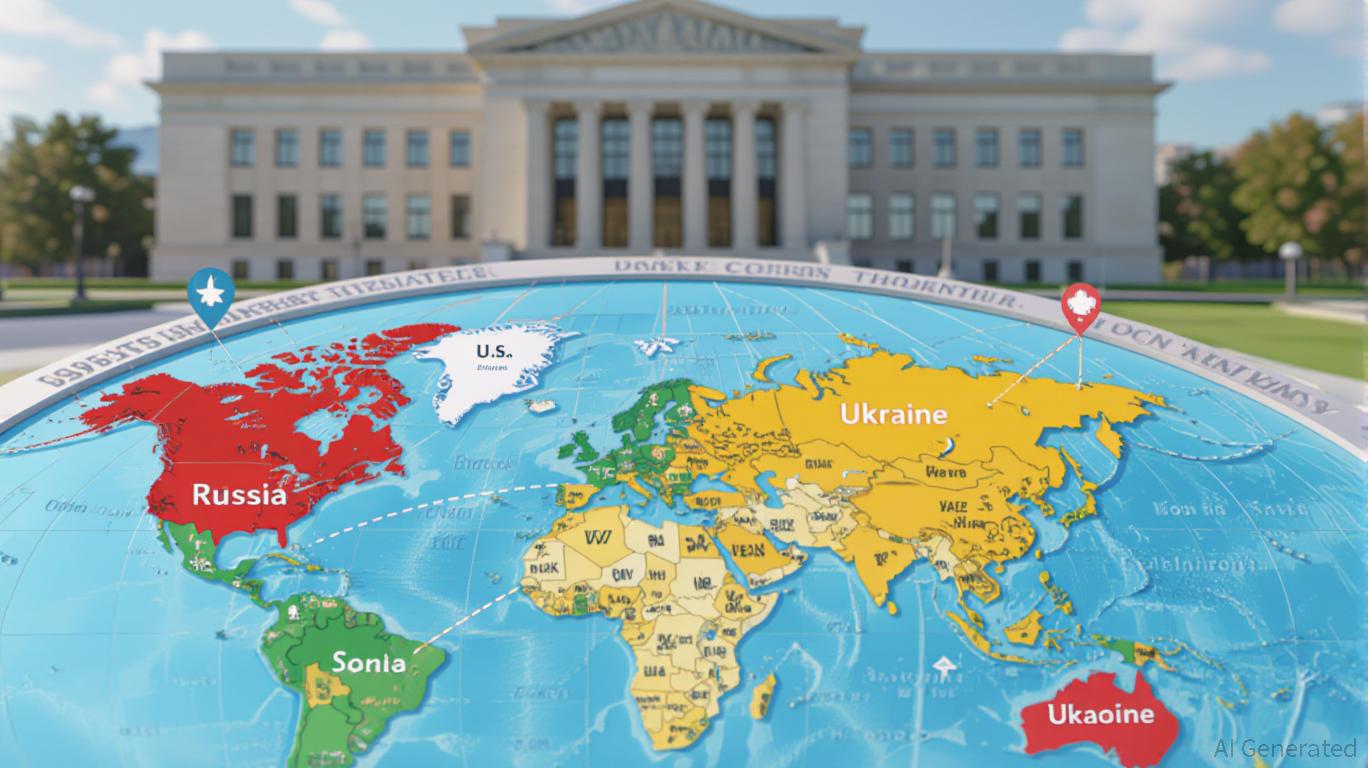
The global investment landscape in late 2025 is defined by a precarious balancing act between geopolitical risk and monetary policy uncertainty. The U.S.-Russia-Ukraine peace talks, now in their critical phase, and the Federal Reserve’s looming policy pivot are reshaping risk-rebalance strategies across equities, bonds, and commodities. Investors must navigate a dual-edged scenario: the potential for de-escalation in Eastern Europe and the Fed’s response to a slowing economy.
Geopolitical Risk: A Fragile Peace and Market Implications
The U.S.-Russia-Ukraine negotiations, though progressing, remain fraught with contradictions. President Donald Trump’s pivot from a short-term ceasefire to a “comprehensive peace agreement” has aligned with Russian President Vladimir Putin’s demands for territorial concessions, including Crimea and Ukraine’s NATO exclusion. However, Ukrainian President Volodymyr Zelenskyy’s refusal to cede land has forced the U.S. and European allies into a delicate role as mediators.
The market’s reaction to this stalemate has been mixed. European defense stocks, such as Italy’s Leonardo (LDO.MI) and Germany’s Rheinmetall (RHM.DE), have surged by over 600% and 1,500% since February 2022, reflecting anticipation of prolonged conflict and increased military spending. Meanwhile, Ukraine’s government bonds, trading at 55 cents on the dollar, remain a barometer of geopolitical sentiment. Aegon Asset Management’s Jeff Grills warns that these bonds could weaken further if Russia gains diplomatic momentum, as seen after the Alaska summit.
Energy markets, too, are caught in a tug-of-war. U.S.-Russia Arctic drilling projects, if realized, could tap into 15% of the world’s undiscovered oil and 30% of its natural gas, potentially triggering a deep energy bear market. Brent crude prices have already dipped to $66 per barrel, with Bank of America’s Michael Hartnett noting that the market is pricing in a peace deal. Yet, Trump’s push for lower U.S. energy prices introduces volatility, complicating long-term investment strategies.
Central Bank Policy: The Fed’s Dovish Dilemma
The Federal Reserve’s July 2025 policy meeting underscored a growing divide between hawkish caution and dovish urgency. With the federal funds rate held at 4.25%-4.5%, the Fed faces a critical juncture: core PCE inflation has moderated to 2.6-2.7%, but real GDP growth has slowed to 1% in H1 2025. Governor Christopher Waller’s call for a 25-basis-point rate cut in July contrasts with Vice Chair Michelle Bowman’s insistence on a data-dependent approach.
Market expectations, as reflected in the Dec-25 Fed Funds futures contract, now price in a 54.3% probability of three rate cuts by year-end. The July FOMC minutes hinted at this shift, with the central bank acknowledging “moderated growth” and “fragility in private-sector payroll growth.” However, Chair Jerome Powell’s hawkish remarks during the press conference—emphasizing inflation risks from recent U.S. tariff hikes—have kept expectations in check.
Strategic Allocation: Balancing Geopolitical and Monetary Risks
Investors must adopt a dual strategy to navigate these intertwined risks. In equities, defense and energy infrastructure firms are key beneficiaries of prolonged conflict and regulatory shifts. Leonardo and Kongsberg Gruppen (KONG.OL) are favored for their diversified R&D pipelines, while LNG infrastructure players like NextEra Energy (NEE) offer long-term resilience.
In bonds, hedging against geopolitical volatility requires a mix of short-duration instruments and gold. Ukraine’s distressed bonds, though risky, could offer asymmetric upside if peace talks collapse. Conversely, U.S. Treasury yields may rise if the Fed delays easing, pressuring long-duration assets.
Energy markets demand a nuanced approach. While Arctic drilling projects could depress oil prices, the EU’s REPowerEU initiative and Asian demand for discounted Russian exports create a fragmented outlook. A 60/40 allocation between energy and renewables, with uranium as a hedge, is advisable.
Conclusion: Agility in a High-Stakes Environment
The interplay of U.S.-Russia-Ukraine peace talks and Fed policy uncertainty demands agility. Investors should prioritize diversification, leveraging data-driven insights to adjust portfolios dynamically. As the Fed weighs rate cuts and Europe ramps up defense spending, the ability to pivot between sectors—defense, energy, and financials—will determine success in 2025’s volatile markets.
In this pre-Fed era of geopolitical mediation, the mantra remains: prepare for the worst, hope for the best, and act decisively when clarity emerges.
